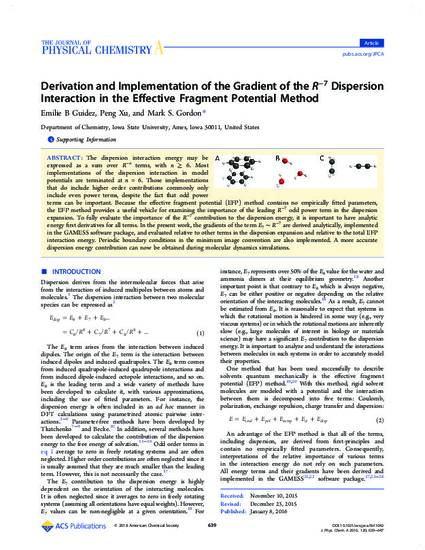
The dispersion interaction energy may be expressed as a sum over R–n terms, with n ≥ 6. Most implementations of the dispersion interaction in model potentials are terminated at n = 6. Those implementations that do include higher order contributions commonly only include even power terms, despite the fact that odd power terms can be important. Because the effective fragment potential (EFP) method contains no empirically fitted parameters, the EFP method provides a useful vehicle for examining the importance of the leading R–7 odd power term in the dispersion expansion. To fully evaluate the importance of the R–7 contribution to the dispersion energy, it is important to have analytic energy first derivatives for all terms. In the present work, the gradients of the term E7 ∼ R–7 are derived analytically, implemented in the GAMESS software package, and evaluated relative to other terms in the dispersion expansion and relative to the total EFP interaction energy. Periodic boundary conditions in the minimum image convention are also implemented. A more accurate dispersion energy contribution can now be obtained during molecular dynamics simulations.
Available at: http://works.bepress.com/mark_gordon/451/

Reprinted (adapted) with permission from The Journal of Physical Chemistry A, 120(4); 639-647. Doi: 10.1021/acs.jpca.5b11042. Copyright 2016 American Chemical Society.